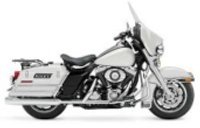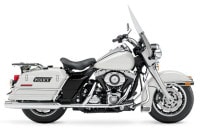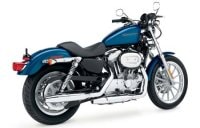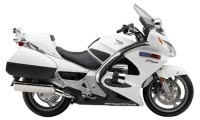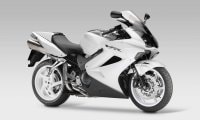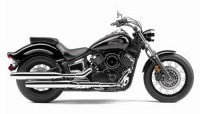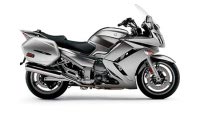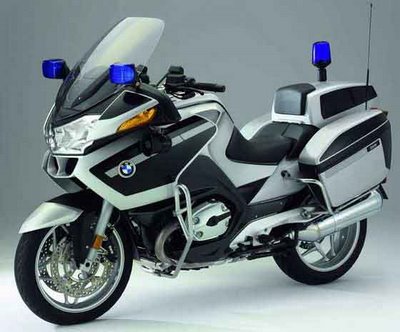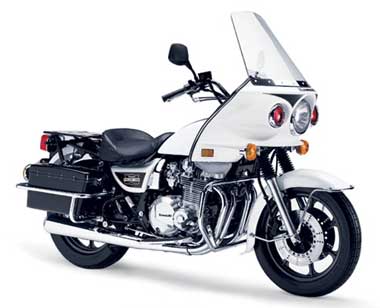The use of motorcycles by various police forces and departments all over the world proved to be one of the most efficient choice through the years, as their maneuverability on crowded streets offer advantages not provided by traditional police vehicles. The motorcycle's relatively small size allows it to get to accident scenes more quickly when incidents such as traffic collisions slow down access by four-wheel vehicles.
Motorcycles also tend to consume less fuel than police cars, which saves costs for the police departments that use them. The basic requirements of a police motorcycle are windshields, saddle boxes, pursuit lights, and folding floorboards rather than foot pegs. The motorcycles used vary on a number of factors such as geographical location or urbanization.
The motorcycles used may be cruisers, sport bikes, touring bikes and other specialized applications. The bikes are also specially designed to carry radio communications devices and are wired for electronic sirens. Police motorcycles generally possess 4-cylinders, which are normally four-stroke. Usually, the motorcycle used are marketed by Harley-Davidson, Yamaha, Honda and BMW. Kawasaki Police Motorcycles ceased production in 2005.
Short History
Motorcycles have been used by police officers since the early beginnings of the 20th century. The first official police motorcycle patrol was organized in the U.S. in 1911 by Chief August Vollmer of the Berkeley, California Police Department.
However, motorcycles were used even earlier by several police forces as patrol vehicles. For example, according to Harley-Davidson, the Detroit, Michigan police was the first purchaser of police motorcycles in 1908. During the same year, the police department in Evanston, Illinois, purchased a belt-driven motorcycle for its first motorcycle police officer. The following year, a police officer from the Portland, Oregon Police Bureau was using his personal motorcycle to patrol the city.
Since then, the role of the motorcycle as an efficient public transportation and their use by the police forces has grown enormously, becoming a must-have in any police unit.
In 2005, Harley-Davidson introduced the first optional Anti-lock Braking System (ABS) on the Police Road Kingand Police Electra Glide models. For 2008, this system has been re-engineered and improved with new Brembo brakes and no intrusion upon the saddlebags.
New enhancements to the Police Touring models include a larger, six-gallon fuel tank, electronic throttle control, rubber-dampened final drive rear sprocket, and automatic compression releases for ease of starting. Other features of the Harley-Davidson Police motorcycles are the Twin Cam 103 engine, the 6-Speed Cruise Drive transmission and a low-maintenance final belt drive.
For the 2009 model year, Harley-Davidson offers the FLHTP Electra Glide, the FLHP Road King, the XL883 Sportster and the new XB12XP Buell Ulysses Police motorcycle. The FLHTP Electra Glide and the FLHP Road King are also offered as Fire/Rescue motorcycles.
Many motorcycle police units have recently considered changing their fleet from Harley-Davidson to Honda, since a Honda model costs less and requires cheaper maintenance. The 2009 Honda Gold Wing ST1300PA is specially equipped for police duty. Features include an adjustable dual-density solo seat, a speedometer graduated in 2-mph increments, special brackets for lights, sirens, and radio equipment, and a 7.7 gallon fuel tank. In Japan, the VFR 800 model is also used by the law enforcement.
In the UK, the Yamaha FJR1300 has replaced the Honda ST1300 as the patrol motorcycle in several police forces, following the withdrawal of the Honda due to some situations of difficult handling at high speeds. The FJR1300 features an electrically-adjusted windshield controlled by a rocker switch on the handlebars, which returns to its lowest position when the key is off.
Yamaha also has a challenger for the Harley-davidson models, with the V Star 1100 Custom model. The model features a "Police-style" windshield that offers great wind and weather protection through its two positions of height adjustability. The Air Induction System (A.I.S.) reduces harmful CO and HC exhaust emissions.
BMW produces police-specific models such as the R1200RT and R900RT, the latter not available to the general public. More than 225 U.S. law enforcement agencies, including the California Highway Patrol, have BMW authority motorcycles in their fleets of patrol vehicles.
The RT-P is the police version of BMW's R1200RT civilian sport tourer, therefore shares the same 110-horsepower and 1,170 cc boxer twin motor, so it can accelerate from 0 to 100 miles per hour in 10.55 seconds or reach a top speed of 130.
UK preferred BMWs in the past and many police agencies chose to return to them in 2007, due to their concerns about the handling of Japanese alternatives.
The new variant can be recognized by the addition of chrome crash bars situated about the front fairing, and could also be used for mounting of additional equipment such as sirens; crash bars around panniers, "city" lids to panniers, single seat with radio box, additional switch gear for equipment, emergency lighting, lower ratio gearbox increase capacity alternator and second battery.
The bike also has inline, 4-cylinder, normally-aspirated four-stroke, double overhead-cam engines and chain drives, and larger generating systems than similar civilian models. The most obvious difference between the KZP and the earlier series was the addition of a fiberglass fairing, to which the front pursuit lights and windshield were mounted.
Earlier Kawasaki police motorcycles had a windshield with a shape similar to that found on the older Harley-Davidson Electra Glide motorcycle.
However, motorcycles were used even earlier by several police forces as patrol vehicles. For example, according to Harley-Davidson, the Detroit, Michigan police was the first purchaser of police motorcycles in 1908. During the same year, the police department in Evanston, Illinois, purchased a belt-driven motorcycle for its first motorcycle police officer. The following year, a police officer from the Portland, Oregon Police Bureau was using his personal motorcycle to patrol the city.
Since then, the role of the motorcycle as an efficient public transportation and their use by the police forces has grown enormously, becoming a must-have in any police unit.
Harley-Davidson Police Motorcycles
Harley-Davidson Police motorcycles have been used by cops for quite a while now. Today, they are used in 45 countries all over the world.In 2005, Harley-Davidson introduced the first optional Anti-lock Braking System (ABS) on the Police Road Kingand Police Electra Glide models. For 2008, this system has been re-engineered and improved with new Brembo brakes and no intrusion upon the saddlebags.
New enhancements to the Police Touring models include a larger, six-gallon fuel tank, electronic throttle control, rubber-dampened final drive rear sprocket, and automatic compression releases for ease of starting. Other features of the Harley-Davidson Police motorcycles are the Twin Cam 103 engine, the 6-Speed Cruise Drive transmission and a low-maintenance final belt drive.
For the 2009 model year, Harley-Davidson offers the FLHTP Electra Glide, the FLHP Road King, the XL883 Sportster and the new XB12XP Buell Ulysses Police motorcycle. The FLHTP Electra Glide and the FLHP Road King are also offered as Fire/Rescue motorcycles.
Honda Police Motorcycles
Many motorcycle police units have recently considered changing their fleet from Harley-Davidson to Honda, since a Honda model costs less and requires cheaper maintenance. The 2009 Honda Gold Wing ST1300PA is specially equipped for police duty. Features include an adjustable dual-density solo seat, a speedometer graduated in 2-mph increments, special brackets for lights, sirens, and radio equipment, and a 7.7 gallon fuel tank. In Japan, the VFR 800 model is also used by the law enforcement.
Yamaha Police Motorcycles
In the UK, the Yamaha FJR1300 has replaced the Honda ST1300 as the patrol motorcycle in several police forces, following the withdrawal of the Honda due to some situations of difficult handling at high speeds. The FJR1300 features an electrically-adjusted windshield controlled by a rocker switch on the handlebars, which returns to its lowest position when the key is off.
Yamaha also has a challenger for the Harley-davidson models, with the V Star 1100 Custom model. The model features a "Police-style" windshield that offers great wind and weather protection through its two positions of height adjustability. The Air Induction System (A.I.S.) reduces harmful CO and HC exhaust emissions.
BMW Police Motorcycles
Everybody knows that BMW is one of the most popular brand in motorcycle police units. In 2007, BMW sold 4,284 police motorcycles across the world. In 2008, there were more than 100,000 BMW motorcycles officially in use in over 150 countries on five continents.BMW produces police-specific models such as the R1200RT and R900RT, the latter not available to the general public. More than 225 U.S. law enforcement agencies, including the California Highway Patrol, have BMW authority motorcycles in their fleets of patrol vehicles.
The RT-P is the police version of BMW's R1200RT civilian sport tourer, therefore shares the same 110-horsepower and 1,170 cc boxer twin motor, so it can accelerate from 0 to 100 miles per hour in 10.55 seconds or reach a top speed of 130.
UK preferred BMWs in the past and many police agencies chose to return to them in 2007, due to their concerns about the handling of Japanese alternatives.
The new variant can be recognized by the addition of chrome crash bars situated about the front fairing, and could also be used for mounting of additional equipment such as sirens; crash bars around panniers, "city" lids to panniers, single seat with radio box, additional switch gear for equipment, emergency lighting, lower ratio gearbox increase capacity alternator and second battery.
Kawasaki Police Motorcycles
The Kawasaki police motorcycles were produced in four series, and though production was ceased in 2005, they are still in use with many major law enforcement agencies. The most common model was the KZ1000P, also known as the KZP. The motorcycle is equipped with windshields, saddleboxes, pursuit lights, and folding floorboards rather than footpegs. It is also designed to carry radio communications equipment and are wired for electronic sirens.The bike also has inline, 4-cylinder, normally-aspirated four-stroke, double overhead-cam engines and chain drives, and larger generating systems than similar civilian models. The most obvious difference between the KZP and the earlier series was the addition of a fiberglass fairing, to which the front pursuit lights and windshield were mounted.
Earlier Kawasaki police motorcycles had a windshield with a shape similar to that found on the older Harley-Davidson Electra Glide motorcycle.
